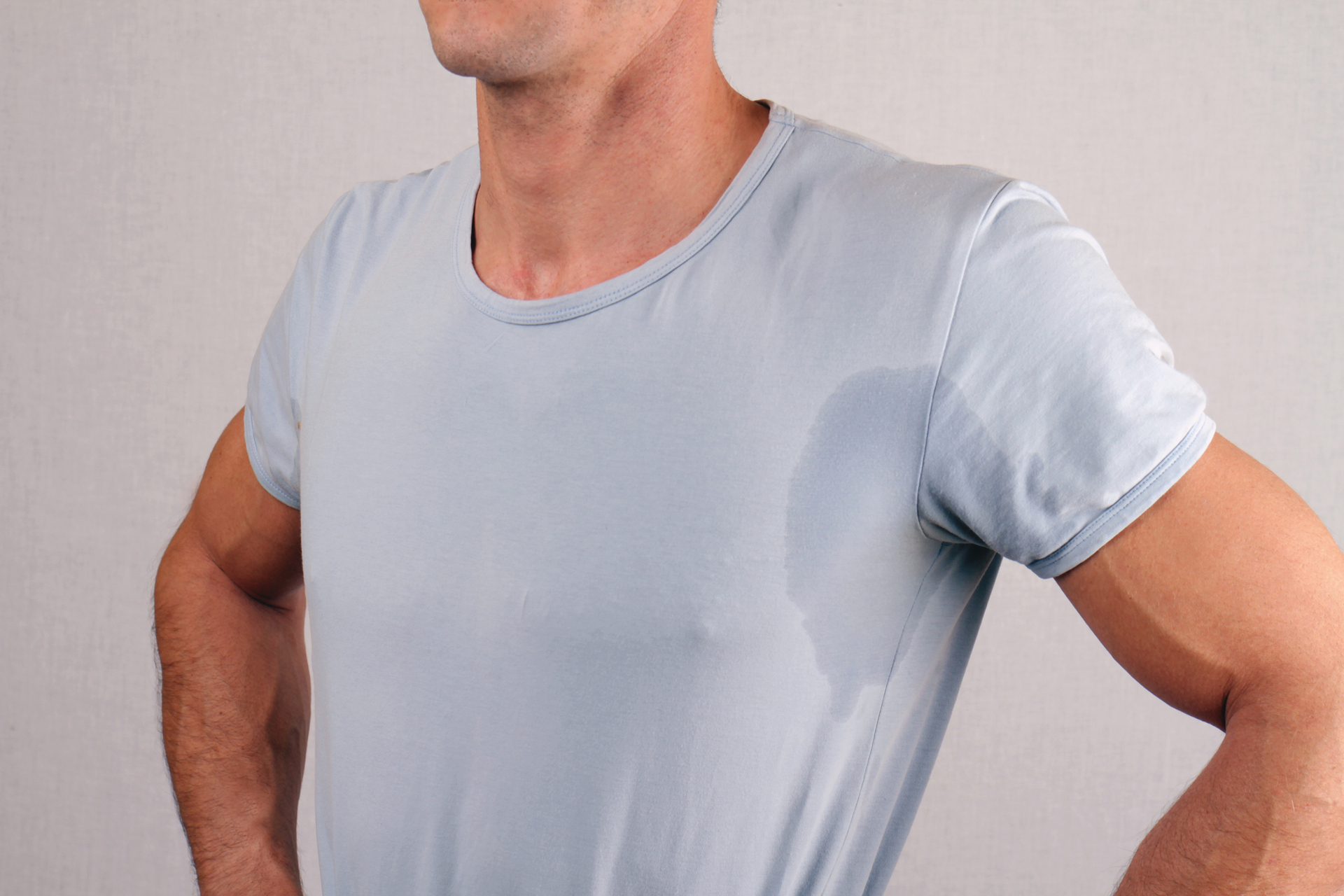Hyperhidrosis: $2,000 | Includes 200 Units total both underarms
Sweating plays a vital role in our health, regulating our body temperature. However, excessive sweating, also called hyperhidrosis, is a medical condition characterized by excessive sweating beyond that which is necessary for thermoregulation. Constant moisture from sweating can lead to skin damage and can increase the risk of skin problems. The condition is classified as either primary or secondary hyperhidrosis.
Primary Hyperhidrosis
Primary focal hyperhidrosis is a disease with profuse perspiration of local sites such as head, face, palms, soles of feet, lower back, buttocks and armpits. It is more common in younger adults aged 18 to 39 years, and it has a genetic component.
Secondary Hyperhidrosis
Secondary hyperhidrosis occurs due to an underlying medical condition such as diabetes mellitus, hyperthyroidism, and lymphoma, or as a side effect of certain medications.
Did You Know?
Hyperhidrosis is estimated to affect around 5% of the population. However, this number may not be accurate because many people don’t realize that hyperhidrosis is a medical condition that can be treated.
Frequently Asked Questions:
Do I have hyperhidrosis?
You may be affected by hyperhidrosis if you have experienced any of the following:
- Excessive sweating that has occurred for at least six months with no explanation
- Excessive sweating that occurs at least once a week
- Sweating that interferes with your daily activities
- Sweat that occurs on both sides of the body in the same amount
- A family history of hyperhidrosis
- Not sweating in your sleep
- Excessive sweating that started before you were 25
To determine if you are affected by primary or secondary hyperhidrosis, schedule a consultation with Dr. Bortecen of SoHo Men’s Health today.
How is hyperhidrosis diagnosed at SoHo Men’s Health?
At SoHo Men’s Health, Dr. Bortecen will begin by asking you about your symptoms and medical history. In most cases, hyperhidrosis can be diagnosed by a physical examination, however additional blood or urine tests may also be performed. In some cases, a starch-iodine test may also be performed. This test consists of putting iodine on a sweaty area and then sprinkling starch over the top when the iodine dries. If the starch turns dark blue, then it means you have excessive sweating.
How is hyperhidrosis treated at SoHo Men’s Health?
At SoHo Men’s Health, we treat hyperhidrosis using Botox injections. Botox therapy is a highly effective treatment for focal hyperhidrosis. The main mechanism of action is the inhibition of specific nerves that activate sweat glands. This treatment involves administering injections into affected areas. These injections cause a very reliable temporary decrease in sweating, typically lasting from three to six months.

